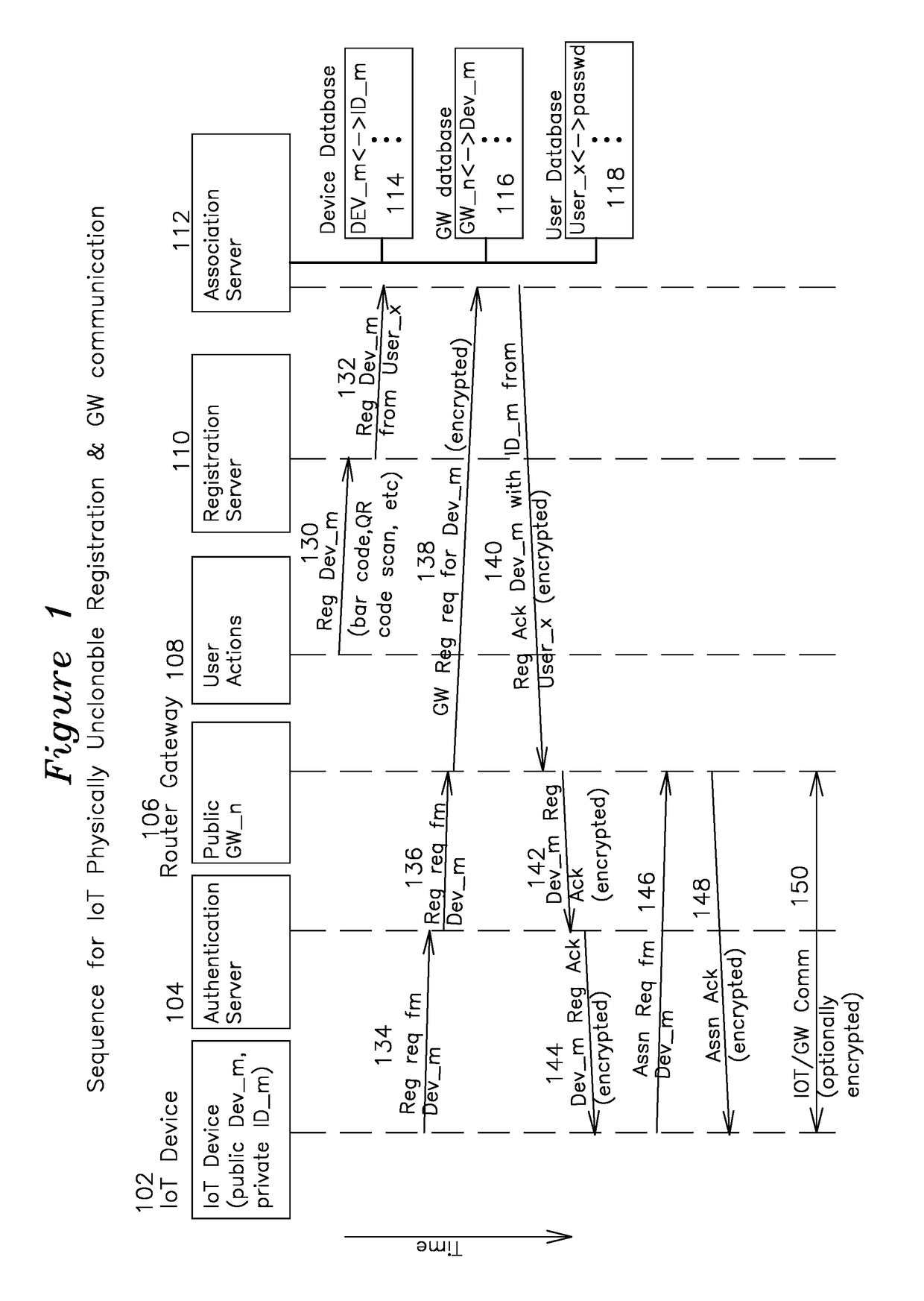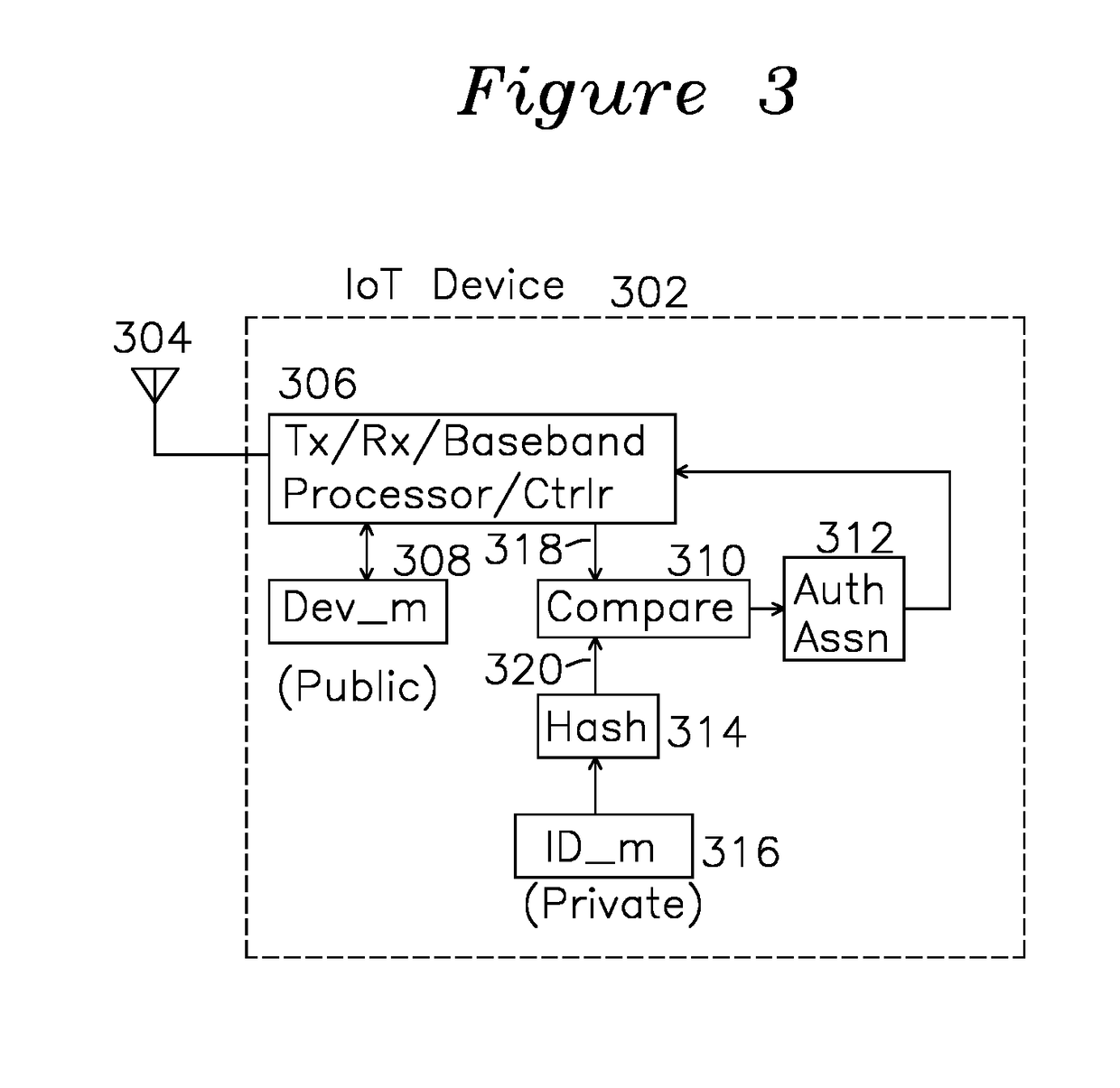Uncloneable Registration of an Internet of Things (IoT) Device in a Network
- Summary
- Abstract
- Description
- Claims
- Application Information
AI Technical Summary
Benefits of technology
Problems solved by technology
Method used
Image
Examples
Embodiment Construction
[0015]FIG. 1 shows a block diagram of the servers and devices of the registration method, as well as a time diagram for progression of the registration sequence. An Internet of Things (IoT) device 102 internally maintains a public device identifier and a private device identifier. The public device identifier is available through an electronic interface, wireless interface, or is in printed form on the outside of the device, whereas the private device identifier is secret. The IoT device is typically a wireless device, with a wireless local area network (WLAN) interface, a Bluetooth wireless interface, or a ZigBee wireless interface. The IoT device 102 typically has an ISO layer 2 address such as a MAC address for WLAN, and a layer 3 address such as an IP address for connectivity to internet hosts and other devices having layer 3 addresses. Authentication server 104 is responsible for the centralized handling of IoT device registration requests from all of the IoT devices on the net...
PUM
 Login to View More
Login to View More Abstract
Description
Claims
Application Information
 Login to View More
Login to View More - R&D
- Intellectual Property
- Life Sciences
- Materials
- Tech Scout
- Unparalleled Data Quality
- Higher Quality Content
- 60% Fewer Hallucinations
Browse by: Latest US Patents, China's latest patents, Technical Efficacy Thesaurus, Application Domain, Technology Topic, Popular Technical Reports.
© 2025 PatSnap. All rights reserved.Legal|Privacy policy|Modern Slavery Act Transparency Statement|Sitemap|About US| Contact US: help@patsnap.com



